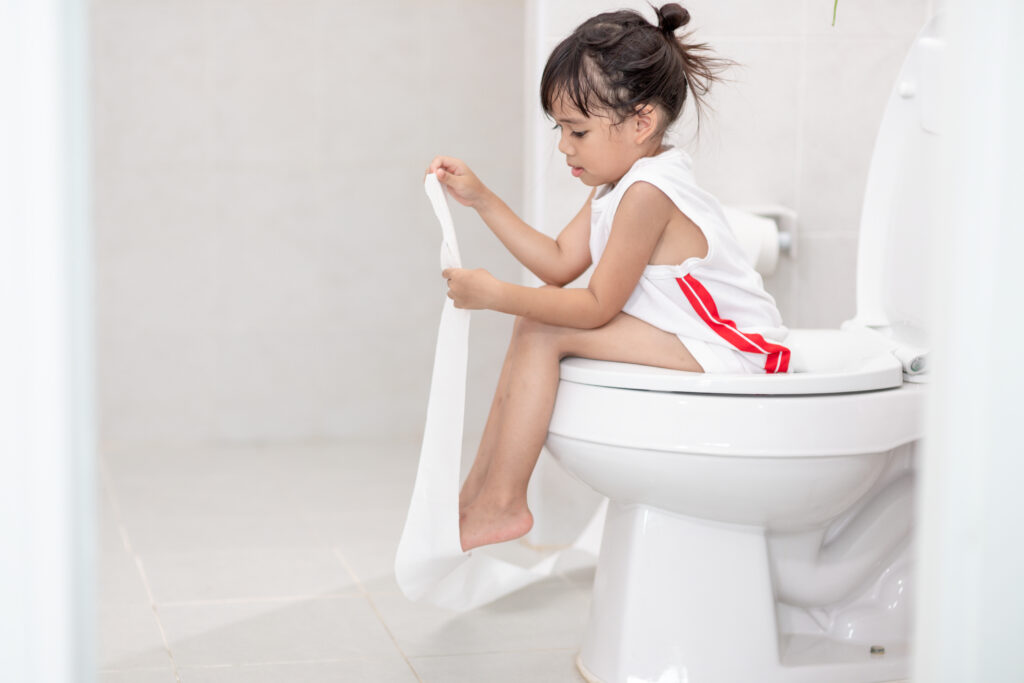Family Traditions: Building Bonds and Shaping Futures

Family traditions are more than just cherished memories—they’re a cornerstone of identity, connection, and emotional well-being. Whether it’s a special holiday celebration, a quirky birthday ritual, or a simple weekly routine, traditions help create a sense of belonging and security for children. These shared experiences foster parent-child bonding while also playing a vital role in shaping a child’s cognitive and emotional development. Let’s explore the value of family traditions, their impact on children’s brains, and how to establish meaningful rituals for holidays, birthdays, and everyday life. Why Family Traditions Matter Family traditions create a sense of continuity and connection. They provide children with a stable foundation in an ever-changing world, reinforcing the values and relationships that define their family. Traditions contribute to family well-being, building trust and fostering positive interactions between family members. On a neurological level, traditions stimulate the brain by reinforcing patterns and emotional connections. Celebrating milestones, engaging in rituals, or repeating familiar activities activates the reward centers of the brain, creating lasting memories. According to child development specialists, these experiences also enhance social skills, emotional intelligence, and self-esteem. Establishing New Traditions Creating family traditions doesn’t have to be elaborate or expensive. The most meaningful rituals are often simple and personal, reflecting your family’s values and interests. Holiday Traditions Birthday Traditions The Value of Legacy in Family Traditions Traditions often reflect a family’s history and cultural identity, linking generations through shared practices. They create a sense of legacy, helping children understand where they come from and what their family stands for. This connection to the past enriches their sense of self and fosters resilience. Holding a family meeting to discuss and design traditions allows everyone to contribute, ensuring that the rituals resonate with all members. These meetings also teach children the value of collaboration and active participation. The Role of Traditions in Child Development Traditions contribute significantly to a child’s growth and learning: Tips for Creating Lasting Traditions Additional Resources for Parenting Support For more tips on building family traditions and fostering mindful parenting, explore child development classes online or consult the best parenting resources available. Stay updated by visiting our press releases here, and follow us on Instagram and YouTube for ideas and inspiration. Final Thoughts: The Gift of Tradition Family traditions are a powerful way to nurture connection, teach values, and create a legacy of love and support. Whether it’s a holiday tradition that spans generations or a new ritual you create with your children, these shared moments become the fabric of your family story. So, gather your loved ones, start small, and watch as these traditions blossom into cherished memories that enrich your family’s bond for years to come. After all, the greatest gift we can give our children is the sense of belonging and joy that traditions bring.
Traveling with Kids: Pro Tips for a Smooth and Memorable Journey

Traveling with kids can feel like an adventure in itself—equal parts exciting and daunting. Whether you’re preparing for their first flight, embarking on a cruise, or planning a road trip, a little preparation goes a long way in ensuring the journey is enjoyable for everyone. Here are some practical tips to help you navigate traveling with kids, from packing smart to keeping them entertained without screens. Preparing Kids for Their First Flight Flying for the first time can be an overwhelming experience for kids. Here’s how to prepare them: Cruising with Kids: Smooth Sailing Tips Cruising can be an amazing family experience, offering a mix of adventure and relaxation. However, traveling on a ship comes with unique challenges. Travel Kits for Kids (Without Screens!) Screens can be lifesavers during long trips, but it’s good to have non-digital options that encourage creativity and engagement. Here are some ideas for screen-free travel kits: The Role of Conscious Parenting While Traveling Traveling is the perfect opportunity to practice mindful parenting. Stay present during the journey, focusing on shared experiences rather than stressing over perfection. Use the travel time to bond and strengthen your relationship with your child. Parent-child bonding happens naturally when you share in their excitement and wonder, whether it’s spotting the first cloud from the plane window or exploring new cultures together. For parents sharing responsibilities, conscious co-parenting is essential. Collaborate to divide tasks like packing, navigating, and keeping the kids entertained. This ensures a smoother trip and sets an example of teamwork for your children. Tips for Stress-Free Travel Stay Connected for More Tips For additional parenting tips, travel ideas, and expert advice, follow us on Instagram and YouTube. We share resources designed to empower your parenting journey and make family adventures unforgettable. To stay informed on family travel trends, check out our press releases here for the latest updates. Final Thoughts: Embrace the Adventure Traveling with kids is less about perfection and more about creating memories together. With preparation, flexibility, and a little creativity, family trips can be a source of joy and connection. Whether it’s your child’s first flight or a family cruise, these shared experiences will strengthen your bond and leave you with stories to cherish for a lifetime. So pack your bags, embrace the adventure, and remember: even the challenges become part of the journey. Happy travels!
Sleep Training: Navigating the Journey to Restful Nights

Sleep training is a hot topic for parents, often stirring a mix of emotions. Whether you’re considering letting your child “cry it out,” co-sleeping, or finding a middle ground, the ultimate goal remains the same: ensuring both you and your child get the rest needed for family well-being. Let’s explore the pros and cons of sleep training, why sleep is crucial for your little one’s development, and how to navigate this journey with care and compassion. Why Sleep Matters Sleep is essential for a child’s physical and mental development. During sleep, their brain consolidates learning, processes emotions, and supports growth. A lack of quality sleep can lead to irritability, difficulty concentrating, and even developmental delays. For parents, insufficient sleep can strain relationships, lower patience levels, and impact your ability to fully engage in parent-child bonding. Sleep training is one way to establish healthy sleep habits, promoting better nights for everyone. Pros and Cons of Sleep Training Sleep training isn’t a one-size-fits-all solution. Understanding its advantages and potential challenges can help you decide what’s best for your family. Pros of Sleep Training Cons of Sleep Training Methods of Sleep Training Cry It Out (CIO) This method involves letting your child cry for gradually increasing periods before comforting them. The idea is to teach self-soothing skills. Gradual Extinction This approach involves slowly reducing your intervention during bedtime over several nights, helping your child adjust at their own pace. Co-Sleeping Co-sleeping involves sharing a bed or room with your child, offering immediate comfort and reassurance. Caring for Your Child During Sleep Training Whether you choose CIO, gradual extinction, or co-sleeping, it’s important to approach sleep training with empathy and mindful parenting techniques. Balancing Parental Roles with Conscious Co-Parenting Sleep practice is easier with teamwork. Practicing conscious co-parenting allows both parents to share the responsibility, ensuring no one feels overwhelmed. Discuss your approach together during a family meeting, and create a plan that works for everyone. Tips for a Smoother Sleep Training Journey Additional Resources for Parents Parenting is a journey filled with learning curves, and sleep training is no exception. Explore child development classes online and access the best parenting resources for tips, tools, and insights that support your child’s growth. For updates on parenting trends and expert advice, check out our press releases here, and follow us on Instagram and YouTube for ongoing tips that empower your parenting journey. Final Thoughts: Restful Nights for a Thriving Family Sleep training is about finding what works best for your child and your family. Whether you let them “cry it out,” co-sleep, or blend methods, the goal is to establish healthy sleep habits that benefit everyone. Trust your instincts, stay patient, and remember that every family’s journey is unique. Ultimately, restful nights pave the way for happier, healthier days, allowing you and your child to thrive together. Sweet dreams!
Safe Halloween: Protecting Your Children While Keeping the Fun

Halloween is an exciting time for children and families. Costumes, candy, and community celebrations make it a holiday to remember. However, with strangers, alcohol at parties, and distracted parents in the mix, ensuring your child’s safety becomes a top priority. By planning ahead and practicing mindful parenting, you can create a memorable and safe Halloween for everyone. Planning for a Safe Halloween Preparation is key to a safe and enjoyable Halloween. Here are steps to take before heading out for trick-or-treating or attending any celebrations: 1. Choose Safe Costumes Costumes should be fun but also practical. Here’s what to keep in mind: 2. Map Out Your Route If you’re trick-or-treating, plan your route in advance. Stick to well-lit areas and neighborhoods you’re familiar with. This minimizes the risk of encountering unsafe environments. 3. Discuss Safety Rules Before heading out, hold a family meeting to go over basic safety rules. Topics to cover: Tips for Safe Trick-or-Treating 1. Go as a Group There’s safety in numbers. Whether you’re walking as a family or with friends, traveling in a group reduces risks and ensures kids are less likely to wander off. 2. Stay Visible Equip your child with a flashlight or glow-in-the-dark accessories. These not only make them easier to spot but also add a fun element to their costume. 3. Check Candy Carefully Before allowing your child to dig into their candy haul, inspect it for tampering. Discard anything that looks opened, unusual, or homemade (unless from someone you trust). Attending Halloween Parties Halloween parties can be fun for older children and families, but they also come with potential hazards, such as alcohol and crowded spaces. Here’s how to keep it safe: 1. Supervise Younger Kids Keep an eye on young children, especially if the party has open alcohol or other distractions. Conscious parenting helps you stay present and aware of your child’s surroundings. 2. Monitor Food and Drinks Make sure your child sticks to food and drinks you’ve approved. It’s easy for little ones to grab something inappropriate in the excitement of a party. 3. Encourage Respectful Behavior Parties often include interactions with unfamiliar people. Teach your child to be polite but cautious, reinforcing boundaries and personal space. Safe Fun at Home If trick-or-treating or parties aren’t your style, consider hosting a Halloween celebration at home. This option allows for creative, safe fun. Ideas for a Home Halloween Party: These activities foster family well-being while keeping the excitement of Halloween alive. Additional Safety Tips for Parents Resources for Parenting Support For more insights on safety, parenting, and child development, check out the best parenting resources available on our website. You can also find helpful advice through child development classes online or by consulting a child development specialist. Stay updated on the latest trends and safety tips by visiting our press releases here, and follow us on Instagram and YouTube for ongoing tips that will empower your parenting journey. Final Thoughts: A Halloween to Remember Halloween is a magical time for kids, filled with fun and adventure. By taking proactive steps to ensure their safety, you can focus on creating memories that last a lifetime. Whether it’s planning your route, choosing the perfect costume, or holding a family meeting to go over safety rules, each effort contributes to a joyful and secure experience. This Halloween, embrace the excitement, practice safety, and enjoy the holiday with your little ones. After all, the most important treat is the peace of mind that comes from knowing your family is safe and happy. Have a spooky, safe, and spectacular Halloween! 🎃
Potty Training: Navigating the Journey with Patience and Positivity

Potty training is a milestone every parent looks forward to, but it’s also one that comes with its share of challenges. It’s easy to worry about timelines or feel frustrated when progress is slow, but here’s the good news: your child won’t go to college in a pull-up. Each child has their unique timeline, and with the right approach, you can make this process a positive experience for the entire family. Let’s explore popular potty training methods, how to stay patient, and how to make the journey as smooth as possible. Why Potty Training Matters Beyond the practical benefits of ditching diapers, potty training plays a significant role in a child’s development. It’s an opportunity to teach independence, responsibility, and self-awareness. For parents, it’s also a moment to practice mindful parenting, where you stay present and attuned to your child’s needs and emotions. Potty training can also enhance parent-child bonding as you work together toward a shared goal. With patience and a bit of creativity, this process can become an empowering experience for your child. The 3-Day Potty Training Method: A Quick Transition The 3-day method is a popular approach for parents looking to make a quick transition from diapers to potty. It involves dedicating three days to intensive potty training, where your child goes diaper-free and is encouraged to use the potty consistently. Benefits of the 3-Day Method: Tips for Success: The Benefits of Pull-Ups For families who prefer a gradual approach, pull-ups can be an excellent tool. They provide a middle ground between diapers and underwear, helping your child transition at their own pace. Benefits of Pull-Ups: Pull-ups can be particularly helpful during the early stages of potty training or as part of a conscious co-parenting strategy, ensuring consistency between caregivers. The Power of the Reward System Rewards can be a fun and effective way to motivate your child during potty training. The key is to make rewards immediate and achievable to reinforce positive behavior. Reward Ideas: Using rewards ties into family well-being by creating a positive atmosphere around potty training, making it a less stressful experience for both you and your child. Staying Positive Throughout the Process Potty training is a journey, not a race. Here’s how to stay positive even when it feels challenging: Additional Resources for Support Potty training doesn’t have to be overwhelming. There are plenty of resources available to guide you through the process. Explore child development classes online or check out the best parenting resources to gain tips and techniques from experts. For updates and insights, visit our press releases here, and follow us on Instagram and YouTube for ongoing tips, tools, and advice to empower your parenting journey. Final Thoughts: Trust the Process Potty training is a significant milestone, but it’s also just one of many steps in your child’s growth. By staying patient, supportive, and positive, you’re not only teaching them a skill—they’re also learning resilience, independence, and trust in your guidance. Whether you opt for the 3-day method, pull-ups, or a blend of both, remember that every child progresses at their own pace. Embrace the journey, celebrate the milestones, and know that with love and encouragement, you’re setting your child up for success—both in potty training and beyond. Happy training!
Guiding the Way: Understanding Lighthouse Parenting

Parenting is often described as one of life’s greatest journeys, and like any journey, it’s easier with a guiding light. That’s where lighthouse parenting comes in. This balanced approach emphasizes guiding children through life with care and attention, like a lighthouse providing direction to ships in the storm. It’s about being a steady, supportive presence while allowing your children to navigate their own paths. Lighthouse parenting blends the principles of conscious parenting with practical strategies for fostering independence, emotional resilience, and a sense of security. Let’s dive deeper into this approach and explore how it can transform your parenting journey. What is Lighthouse Parenting? Lighthouse parenting is a term coined by Dr. Kenneth Ginsburg, a pediatrician and child development expert. It’s based on the idea that parents should act as beacons of light—guiding their children safely through challenges while letting them explore and grow. This approach strikes a balance between being involved and giving children the space they need to learn from their experiences. Lighthouse parents provide structure, set boundaries, and instill values while encouraging independence and critical thinking. Key Principles of Lighthouse Parenting How to Practice Lighthouse Parenting 1. Set Clear Boundaries Children thrive with structure, but they also need flexibility to explore. Establish rules that are firm yet reasonable, and explain the reasons behind them. For example, holding a family meeting to discuss house rules ensures that children feel involved and understand the expectations. 2. Encourage Independence Give your child opportunities to make decisions appropriate for their age. Whether it’s letting toddlers choose their outfits or allowing older kids to plan their schedules, these experiences build self-reliance and problem-solving skills. 3. Focus on Emotional Development Lighthouse parenting emphasizes emotional intelligence. Teach your child to identify and express their emotions in healthy ways. This approach aligns with practices taught in child development classes online and supported by child development specialists. 4. Balance Support and Freedom Be there when your child needs you, but resist the urge to solve every problem for them. Offering guidance while allowing them to face challenges on their own builds resilience and adaptability. The Benefits of Lighthouse Parenting Tips for Starting Your Lighthouse Parenting Journey Stay Informed and Empowered For more tips on parenting styles and strategies, check out our press releases here and follow us on Instagram and YouTube. We offer expert advice and real-life examples to empower your parenting journey. Final Thoughts: Lighting the Path for Your Child Lighthouse parenting is about finding the balance between providing guidance and allowing independence. By being a steady, supportive presence, you’re equipping your child with the tools they need to navigate life’s waters confidently. Embrace the journey, trust in your parenting instincts, and remember that your love and guidance are the most important beacons in your child’s life. Together, you’ll create a foundation of trust, resilience, and connection that will carry them through life’s challenges and triumphs.
Baby Signing: A Bridge to Early Communication and Connection

Baby signing is a powerful tool that can help toddlers express their needs before they’re able to speak. Imagine being able to understand what your child wants without tears or tantrums! Signing helps bridge the communication gap, making the early years smoother for both parents and children. Teaching simple signs can foster stronger connections, reduce frustration, and lay the groundwork for language development. Why Baby Signing Matters Babies are naturally eager to communicate, but their vocal cords and language skills aren’t fully developed in the first year or two of life. This often leads to frustration on both ends, as babies have needs and desires they can’t yet verbalize. Signing gives them a way to communicate before words fully emerge. Using signs in a child’s early life aligns with conscious parenting principles, encouraging us to be attentive to our child’s cues and respond to their needs in a supportive manner. When babies can communicate through signs, it enhances parent-child bonding and builds trust. Studies have shown that babies who learn basic signs tend to develop language skills more confidently, and early communication can lead to fewer tantrums and a calmer family environment. Getting Started with Baby Signing Starting with baby signs doesn’t have to be overwhelming. Simple, consistent gestures are often all it takes. Ideally, begin with a few basic signs that correspond to everyday needs or activities. Babies usually start signing back between 6-12 months, and using these signs regularly helps them understand and remember. Mindful parenting can help you integrate signing naturally. Engage your child by making eye contact, repeating the sign, and saying the word aloud. This approach reinforces the concept without overwhelming your baby. Top 5 Signs to Teach Your Baby Here are five basic signs to help your baby communicate their needs: Tips for Success with Baby Signing The Bigger Picture: Communication and Family Connection Baby signing not only empowers your child but also strengthens family communication. When your baby can express their needs, it reduces frustration for both of you and enhances family well-being. By creating a communication-rich environment, you’re building a strong foundation for language and connection that supports both short-term understanding and long-term emotional development. For more resources and tips on effective communication with your child, follow us on Instagram and YouTube. We share expert insights and practical advice that empower your parenting journey and provide tools for fostering a healthy family environment. Final Thoughts: Building Bonds Through Communication Teaching your baby to sign is a beautiful way to connect and communicate before words are fully formed. It’s an investment in your relationship, showing your child that you understand their needs and are committed to their growth. Every sign, every gesture, and every shared moment adds to a foundation of love and trust. So embrace this journey, have fun with the signs, and enjoy the milestones as your little one learns to express themselves. These moments are precious, and each sign brings you one step closer to a world of understanding and joy with your child.
Mental Health in Children: Recognizing Signs and Supporting Well-being

The mental health of children is an increasingly pressing issue. Paediatricians and mental health professionals are raising alarms as children face unprecedented challenges, including the lingering effects of the pandemic and growing societal pressures. As parents, it’s crucial to be vigilant in recognizing early signs of distress, as these can pave the way for early intervention and support. Let’s explore the initial signs of mental health struggles in children and how we, as parents, can guide them through these challenges with compassion and mindful parenting. Recognizing the Signs of Distress Children often express mental distress differently than adults, so it’s essential to understand their behaviors and emotions from a developmental perspective. Here are some initial signs that may indicate your child is struggling: What to Do When You Notice Signs of Distress If you observe any of these behaviors, it’s essential to approach the situation with patience and empathy. Conscious parenting encourages us to be fully present with our children, acknowledging their emotions without judgment. Finding Supportive Resources It’s also helpful to seek out resources that align with your child’s needs. From child development classes online to community-based programs, there are numerous avenues for gaining insight into your child’s mental health journey. Access to best parenting resources can empower you as a parent to support your child effectively and understand their unique needs. Fostering Mental Health through Community No parent should have to navigate these challenges alone. Following parenting-focused communities on social media, such as our Instagram and YouTube channels, can provide valuable tips, expert interviews, and support from other parents who may be facing similar situations. Sharing stories, resources, and insights can create a sense of community that strengthens our parenting journey. Final Thoughts: Your Role in Supporting Your Child’s Mental Health Supporting your child’s mental health is an ongoing journey that requires compassion, patience, and a commitment to understanding. Remember, noticing signs of distress is not a reflection of failure but an opportunity to strengthen your bond and guide them through life’s challenges.If you’re ever unsure, remember that reaching out for help is a powerful step toward supporting your child. Together, through mindful parenting and open communication, we can create a safe, nurturing environment where children feel seen, heard, and loved. Let’s walk this path with courage, knowing that each moment of connection helps build resilience and a brighter, healthier future for our children.
Raising Boys: Nurturing Connection and Understanding

Raising boys can be a wonderfully unique journey. Boys often engage with the world in ways that are more physical than emotional, and understanding this dynamic can help parents foster meaningful connections that support their development. While every child is unique, research shows that boys tend to explore and learn differently from girls. By recognizing these traits and adopting a mindful approach, parents can support their boys in a way that helps them thrive. How Boys Learn and Play Boys are typically more physically active, exploring the world through touch, movement, and play. They’re often drawn to activities that challenge their strength, coordination, and problem-solving abilities. This physical engagement is not just an outlet for their energy; it’s also essential for their brain development. Studies show that physical play can enhance boys’ cognitive skills, emotional regulation, and social interactions. For instance, activities for toddlers that involve building, climbing, or solving puzzles can provide boys with the physical stimulation they need while also encouraging cognitive growth. Simple games like building blocks or playing catch can improve motor skills and teach problem-solving in a hands-on way. Embracing these tendencies can make learning enjoyable and productive, especially for young boys. Emphasizing Physical Connection and Play While boys may express themselves through physicality, this doesn’t mean they’re any less capable of emotional depth. They simply may require different ways to express their emotions. Often, boys connect deeply during active play or shared physical activities. If you’re aiming for parent-child bonding, consider incorporating activities that allow boys to express themselves while engaging physically, like playing sports, hiking, or even roughhousing (within safe boundaries). Active play creates a space for boys to communicate nonverbally, making it easier for them to open up emotionally over time. For example, taking a walk together or working on a project side-by-side allows for shared moments that build trust. Parents can use these moments to gently ask questions or check in, creating opportunities for connection without forcing direct conversation. Supporting Connection of Emotional Growth in Boys While physicality is essential for many boys, fostering emotional growth is equally important. Boys may not always express emotions as openly as girls, so helping them identify and understand their feelings is crucial. Mindful parenting can be a valuable approach here, as it encourages parents to observe their child’s emotional cues and respond with patience and empathy. Encourage boys to recognize and name their emotions. During a family meeting, for example, create a safe space for everyone to share their feelings, even if it’s just a few words. Boys often benefit from seeing emotions discussed openly and positively, which teaches them that it’s okay to feel and express their emotions. Using conscious parenting strategies like active listening and affirming their feelings can help boys understand that emotions are natural and important. This is especially impactful when practiced consistently, as it models a balanced approach to both physical and emotional engagement. Practical Tips for Raising Boys Nurturing Growth Through Connection Raising boys is about more than just managing their energy levels. It’s about recognizing their unique ways of connecting, learning, and growing. By fostering both physical engagement and emotional openness, parents can create an environment where boys feel secure, understood, and valued. If you’re interested in learning more about parenting strategies that support healthy, well-rounded development, follow us on Instagram and YouTube. We share tips, insights, and resources to help you navigate your parenting journey, building deeper bonds and a supportive family dynamic. Remember, every child is unique, and the journey of raising boys is filled with moments of discovery and growth. Celebrate these milestones, and know that each day brings new ways to connect, understand, and nurture the young men they’re becoming.
Raising Girls: Nurturing Emotional Connection and Growth

Raising girls comes with its own unique joys and challenges. Often, girls are wired for emotional connection before physical connection, making relationships, communication, and empathy key elements in their development. Understanding this can help parents create an environment that nurtures these strengths, while also fostering independence and resilience. By meeting their daughters’ emotional needs, parents can build a foundation of trust, love, and respect that lasts a lifetime. The Power of Emotional Connection From a young age, girls tend to be drawn toward emotional and social engagement. They’re often curious about relationships, keen observers of emotions, and naturally inclined toward empathy. This tendency doesn’t mean they won’t enjoy physical activities, but it does highlight the importance of parent-child bonding in their development. When parents prioritize connection, girls feel understood, valued, and secure, which supports their confidence and self-esteem. This emotional connection begins in simple ways, such as spending quality time together, engaging in deep conversations, and actively listening to their feelings. Mindful parenting can be particularly effective here, as it encourages parents to tune in to their child’s emotional world and respond thoughtfully, rather than reactively. Girls often benefit when parents model open communication and emotional awareness, teaching them that their feelings are valid and worth exploring. How Girls Learn and Engage Girls are typically more interested in activities that involve communication, storytelling, and creative play. For instance, activities for toddlers like role-playing, drawing, and reading aloud can be incredibly engaging for young girls, as they combine creativity with social interaction. Storytelling, in particular, helps girls develop language skills, empathy, and a better understanding of emotions. As girls grow, they often seek opportunities to connect and engage with others, whether through friendships, teamwork, or collaborative learning. Parents can support these tendencies by creating opportunities for social interaction and encouraging activities that emphasize teamwork and cooperation. This doesn’t mean girls won’t thrive in independent activities, but social and emotional engagement is often a key motivator in their learning process. Building Emotional Intelligence To support your daughter’s emotional growth, it’s essential to nurture her emotional intelligence. This means helping her recognize and manage her emotions, as well as understand the emotions of others. Activities that encourage self-reflection, such as journaling or drawing, can be great tools for girls to explore their feelings. Holding regular family meetings can also be a way to encourage emotional openness. These gatherings create a safe space for everyone to share their thoughts, address conflicts, and practice respectful listening. When girls see their parents valuing emotional expression, they learn that it’s okay to express vulnerability and ask for support. Practical Tips for Raising Girls Encouraging a Growth Mindset Girls may sometimes feel pressured to be perfect, which can lead to anxiety or self-doubt. To counter this, encourage a growth mindset by celebrating effort and resilience rather than perfection. Remind her that mistakes are part of learning and that growth comes from trying new things, even if she doesn’t succeed right away. This helps her develop a healthy self-image and the courage to take risks. Final Thoughts: A Journey of Connection and Empowerment Raising girls is a rewarding experience, filled with moments of deep connection and joy. By prioritizing emotional connection, supporting her independence, and nurturing her growth mindset, you’re helping her build a strong foundation for the future. Girls who feel valued, understood, and respected grow into women who are confident, empathetic, and resilient. If you’d like more tips on raising confident and emotionally intelligent daughters, follow us on Instagram and YouTube. We share insights, resources, and practical advice to support your parenting journey and foster healthy family dynamics. Remember, every moment spent connecting with your daughter is an investment in her future. By showing her love, understanding, and support, you’re not only raising a daughter—you’re nurturing a strong, compassionate individual who will carry these lessons forward for a lifetime.

